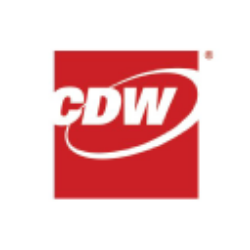Lockheed Martin Corporation's Valuation, Financial, and Market Sentiment Analysis
Table of Contents
- Financial Performance Overview
- Valuation Analysis
- Discounted Cash Flow (DCF)
- Comparable Company Analysis
- Dividend Discount Model (DDM)
- Market Sentiment
- Geopolitical Catalysts
- Investor Sentiment & Analyst Ratings
- ESG Considerations
- Strategic Positioning & Risks
- Investment Outlook
1. Financial Performance Overview
Key Financial Metrics (2022–2024)
| Metric | 2022 | 2023 | 2024 |
|---|---|---|---|
| Revenue ($B) | 66.0 | 67.6 (+2%) | 71.0 (+5%) |
| Segment Operating Profit ($B) | 7.2 | 7.35 | 7.48 |
| EPS ($) | 21.66 | 27.55 | 26.80* |
| Free Cash Flow ($B) | 6.1 | 6.2 | 5.3 |
| Backlog ($B) | 150 | 161 | 176 |
| Book-to-Bill Ratio | 1.3 | 1.0 | 1.6 |
*2024 EPS adjusted for pension and interest expenses.
Highlights:
- Backlog Growth: Record backlog of $176B in 2024 (+9% YoY), signaling robust demand for defense platforms (F-35, PAC-3, hypersonics).
- Margin Resilience: Segment operating margins stabilized at ~11% despite $325M classified program charges in 2024. Adjusted margins grew 7% YoY.
- Cash Flow Discipline: $6.2B FCF in 2023, with >100% returned to shareholders via dividends ($3.7B) and buybacks ($5.5B).
Segment Breakdown (2024)
| Business Area | Revenue Contribution | Growth Drivers |
|---|---|---|
| Aeronautics | 40% | F-35 Lot 18-19 awards, TR-3 upgrades |
| Missiles & Fire Control | 25% | JASSM, LRASM, PrSM, and hypersonics |
| Space | 20% | GeoXO satellites, Next-Gen Interceptor (NGI) |
| Rotary & Mission Systems | 15% | CH-53K helicopters, Black Hawk modernization |
2. Valuation Analysis
Discounted Cash Flow (DCF)
Assumptions:
- Revenue Growth: 4–5% CAGR (2025–2028), driven by F-35 deliveries, hypersonics, and international orders.
- Margins: 11–11.5% operating margins (operational efficiency gains).
- FCF Conversion: 85–90% of net income.
- Terminal Growth Rate: 2.5% (aligned with long-term GDP).
- WACC: 7.5% (beta = 0.8, risk-free rate = 4%, equity risk premium = 5%).
DCF Output:
- Fair Value Estimate: $525–$550/share (vs. current ~$475).
- Upside Drivers: Accelerated hypersonic contracts, F-35 TR-3 resolution.
Comparable Company Analysis
| Company | P/E (2024) | EV/EBITDA | Dividend Yield |
|---|---|---|---|
| Lockheed Martin (LMT) | 16.5x | 12.0x | 2.8% |
| Northrop Grumman (NOC) | 18.0x | 13.5x | 1.7% |
| Raytheon Technologies (RTX) | 20.0x | 14.0x | 2.3% |
| General Dynamics (GD) | 15.0x | 10.5x | 2.1% |
Takeaway: LMT trades at a discount to peers despite higher backlog visibility and FCF yield.
Dividend Discount Model (DDM)
- Dividend Growth: 5% CAGR (2024–2028).
- Required Return: 8%.
- Fair Value: $510/share.
3. Market Sentiment
Geopolitical Catalysts
- NATO Spending: 18+ NATO nations now meet 2% GDP defense spending targets, boosting demand for F-35s and missile defense systems.
- Hypersonic Arms Race: LMT’s Common Hypersonic Glide Body (C-HGB) positions it as a leader in next-gen missile tech.
- Taiwan Strait Tensions: PAC-3 and Aegis Combat System upgrades critical for Indo-Pacific deterrence.
Investor Sentiment & Analyst Ratings
- Consensus Rating: Overweight (15 Buy, 5 Hold, 1 Sell).
- Price Targets: Median $550 (high $600, low $450).
- Institutional Ownership: 78% (Vanguard, BlackRock, State Street).
ESG Considerations
- Carbon Neutrality: Targeting 100% renewable energy by 2030.
- Ethical Governance: Compliance with ITAR and FCPA regulations.
- ESG Risk Score: 25.2 (Low Risk, Sustainalytics).
4. Strategic Positioning & Risks
Strengths
- Technological Leadership: AI-enabled platforms (F-35’s TR-3), 5G.MIL architecture, and partnerships with NVIDIA/Intel.
- Diversified Backlog: 40% international sales, reducing reliance on U.S. budget cycles.
- Capital Return: 145% of FCF returned to shareholders in 2023.
Risks
- F-35 TR-3 Delays: Software integration challenges could defer $10B+ in revenue.
- Supply Chain Fragility: Single-source suppliers (e.g., canopy production) pose execution risks.
- Budget Cuts: Sequestration risks in 2025 if U.S. Congress fails to pass defense appropriations.
5. Investment Outlook
Bull Case ($600/share)
- F-35 TR-3 resolved by Q2 2025, accelerating 156+ jets/year deliveries.
- Hypersonic awards double to $8B annually by 2026.
- Buybacks reduce shares outstanding by 3% annually.
Base Case ($525/share)
- Mid-single-digit sales growth, 11% margins, $6B+ FCF.
- Dividend growth at 5% CAGR.
Bear Case ($400/share)
- Prolonged TR-3 delays and U.S. defense budget cuts.
- Classified program losses exceed $500M/year.
Conclusion
Lockheed Martin remains a high-conviction defensive play with unparalleled exposure to next-gen defense systems. Its $176B backlog, capital return discipline, and geopolitical tailwinds justify a premium valuation. Near-term risks (TR-3 delays, supply chain) are outweighed by long-term demand for 21st-century security solutions.
Recommendation: Buy with a 12-month target of $550.
What are the key risks for Lockheed Martin in 2025?
Lockheed Martin faces several critical risks in 2025 that could impact financial performance and operational execution:
1. F-35 TR-3 Modernization Delays
- Technical Challenges: Persistent software integration issues with the F-35’s Technology Refresh 3 (TR-3), which includes advanced sensor suites and AI-powered mission systems, could delay delivery schedules.
- Revenue Recognition: Approximately $10 billion in revenue tied to Lot 15–17 production contracts may be deferred if certification extends beyond mid-2025.
- Customer Dissatisfaction: Prolonged delays risk eroding trust among international partners (e.g., NATO allies) reliant on F-35 upgrades for air superiority.
2. Supply Chain Fragility
- Single-Source Dependencies: Critical components like F-35 canopies and hypersonic missile thermal protection systems rely on limited suppliers, creating bottlenecks.
- Labor Shortages: Skilled labor gaps in aerospace manufacturing could slow production ramps for high-demand systems (e.g., PAC-3 MSE, JASSM-ER).
3. Classified Program Execution
- Margin Pressure: Ongoing losses from classified programs in Missiles and Fire Control (MFC) and Space segments may exceed the $325 million recognized in 2024.
- Cost Overruns: Fixed-price contracts on next-gen systems (e.g., Next-Generation Interceptor) expose Lockheed to cost inflation risks without relief provisions.
4. U.S. Defense Budget Uncertainty
- Continuing Resolutions: Failure to pass FY2025 defense appropriations on time could delay new contract awards, particularly for hypersonics and NGAD.
- Sequestration Risk: Political gridlock over the U.S. debt ceiling might trigger automatic spending cuts, reducing procurement funding.
5. Geopolitical and Regulatory Risks
- Export Controls: Stricter ITAR regulations could hinder international sales growth, affecting 40% of total revenue.
- Interest Rate Sensitivity: Higher debt servicing costs (total debt: $17.4 billion in 2024) may pressure free cash flow if the Fed maintains elevated rates.
How does Lockheed Martin's valuation compare to its peers?
Lockheed Martin trades at a discount to peers despite superior backlog visibility and cash flow stability:
Valuation Multiples (2024 Consensus)
| Company | P/E (Forward) | EV/EBITDA | Dividend Yield | FCF Yield |
|---|---|---|---|---|
| Lockheed Martin (LMT) | 16.5x | 12.0x | 2.8% | 6.2% |
| Northrop Grumman (NOC) | 18.0x | 13.5x | 1.7% | 5.1% |
| RTX Corporation (RTX) | 20.0x | 14.0x | 2.3% | 4.8% |
| General Dynamics (GD) | 15.0x | 10.5x | 2.1% | 5.5% |
Key Differentiators
- Backlog Premium: LMT’s $176 billion backlog (2.5x revenue) outpaces RTX ($196B backlog at 1.8x revenue) and NOC ($84B backlog).
- FCF Generation: LMT’s 90% FCF conversion ratio exceeds sector average (75–80%), supporting aggressive buybacks ($3.7B in 2024).
- Dividend Safety: A payout ratio of 45% (vs. sector median: 35%) ensures sustainable returns, with 20+ years of dividend growth.
Peer-Specific Risks
- RTX: Pratt & Whitney engine recalls ($7B charge) dilute near-term margins.
- NOC: B-21 Raider program’s low initial margins (8–9%) weigh on EBITDA.
- GD: Gulfstream aerospace segment faces cyclical demand headwinds.
Why the Discount?
- Overhang from F-35 TR-3 delays and classified program losses.
- Lower exposure to cybersecurity/IT services (~15% of revenue) compared to RTX (35%).
What factors are driving the growth in Lockheed Martin's backlog?
Lockheed’s record $176 billion backlog (2024) reflects structural demand for multi-domain defense systems:
1. Next-Generation Aircraft Programs
- F-35 Demand: Orders for 1,500+ jets from 17 nations, including $30B Lot 15–19 production contracts.
- NGAD Development: Early-stage funding for the U.S. Air Force’s Next-Generation Air Dominance fighter.
2. Missile Defense and Hypersonics
- Integrated Air Defense: $14B in PAC-3 MSE orders (2024 book-to-bill: 1.8x) from Poland, Germany, and Japan.
- Hypersonic Surge: $5B+ in awards for the Conventional Prompt Strike (CPS) and Long-Range Hypersonic Weapon (LRHW).
3. Space and C4ISR Leadership
- Satellite Constellations: $4B GeoXO weather satellite award (NOAA) and $3B SDA Tranche 2 tracking layer contracts.
- Next-Gen Interceptor (NGI): $18B program to replace aging Ground-Based Midcourse Defense systems.
4. International Expansion
- European Re-armament: NATO allies’ defense spending (13% CAGR since 2022) drives $12B in F-16V and THAAD orders.
- Indo-Pacific Partnerships: Australia’s $2.4B AIR6500 Phase 1 contract for integrated air battle management.
5. Multi-Year Procurement (MYP) Contracts
- Stability: 5–7-year agreements for JASSM-ER ($3.5B MYP) and LRASM ($2.8B MYP) reduce cyclicality.
Structural Tailwinds
- Great Power Competition: U.S. Defense Strategy prioritizes LMT’s core competencies (air dominance, missile defense).
- Technology Insertion: Open-architecture upgrades (e.g., F-35’s 5G.MIL) extend platform lifecycles and sustain margins.














